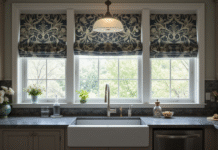Last Updated on September 9, 2023 by
With the summer season upon us, you may be thinking about hiring the best house painters in Melbourne and giving your home a new look.
Painting the interior of your house is one of the least expensive ways to freshen up or completely change the look of your home. However, many people dread having to do this because they think it will take a lot of time and energy, not to mention be a bit messy.
But it doesn’t have to be that way; there are some things you can do to make painting your house easier. People are usually scared to paint their houses because of the mess it creates. Well, this is possible and you do not need to be a professional for doing it. You can paint the interiors of your house by yourself. Here are 5 methods that will help you in getting a perfect interior painting inside your house.
Table of Contents
Masking Supplies
It is important that you use some masking supplies like painter’s tape and plastic sheeting so as to protect the different parts of your house from any kind of damage. The tape sticks on to the surface and also easily comes off without affecting any of the surfaces. The plastic sheeting will cover all your furniture and floors with ease so that they do not get damaged by any paint or dust.
Filling Up Holes and Cracks
It is important that the holes and cracks in your walls are properly filled with putty or spackling compound so that they do not show up after painting. You can use a special tool known as “Spackle Knife” which helps you smooth over and spread the compound on your wall so as to fill up cracks, holes, and dents on the wall. It is suggested that you properly sand down the area before applying another coat of paint.
Allergic reaction
If you experience itchy skin, rashes, sneezing, coughing, or shortness of breath after painting your home, you could be experiencing an allergic reaction. The most likely culprit is the paint itself. Most paints are made from synthetic ingredients that can cause allergies. If you’re allergic to latex gloves, chances are good that you’re also allergic to latex paint. If you had an allergic reaction in the past when painting your home or working on similar projects, you should take precautions before painting again:
- Wear a face mask or respirator while painting to prevent inhaling airborne particles
- Use plastic gloves to protect your hands from direct contact with the paint
- Buy low-VOC (volatile organic compound) paint instead of standard paint
Lining Walls
The first thing you want to do is line your walls so as to protect them from paint splatter and drips. The kind of paper or plastic lining you choose will depend on the type of paint you’ll be using and what type of surface it’ll be on. For instance, in areas where a lot of light is expected, you can use white lining paper so that the color doesn’t show through on the finished product. This can also help brighten up a room by reflecting light back into it. You can also use thin plastic sheets or even thick plastic garbage bags if you’re going to be using oil-based paint.
Read More: Drain Pipe Lining Old Windsor



























